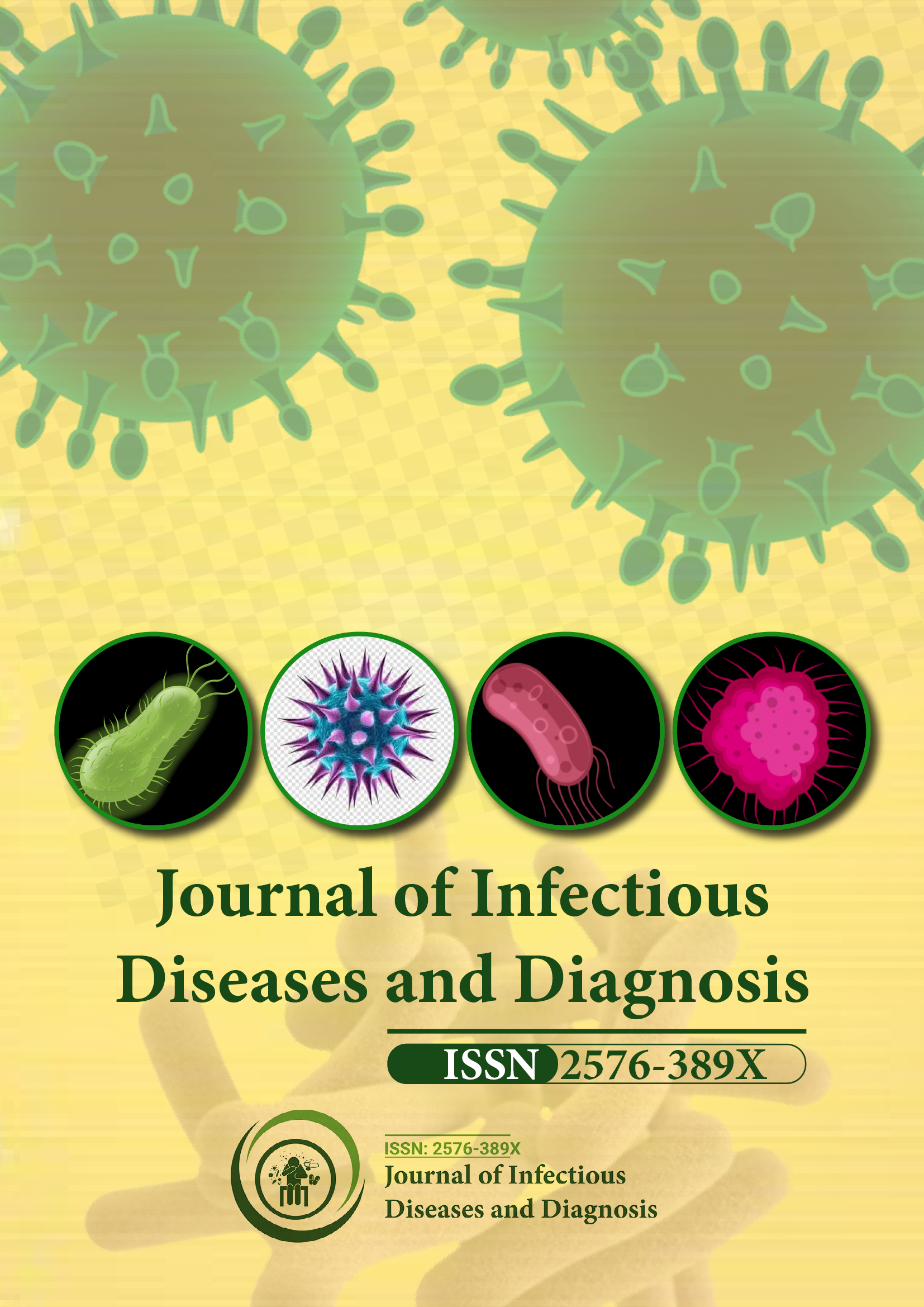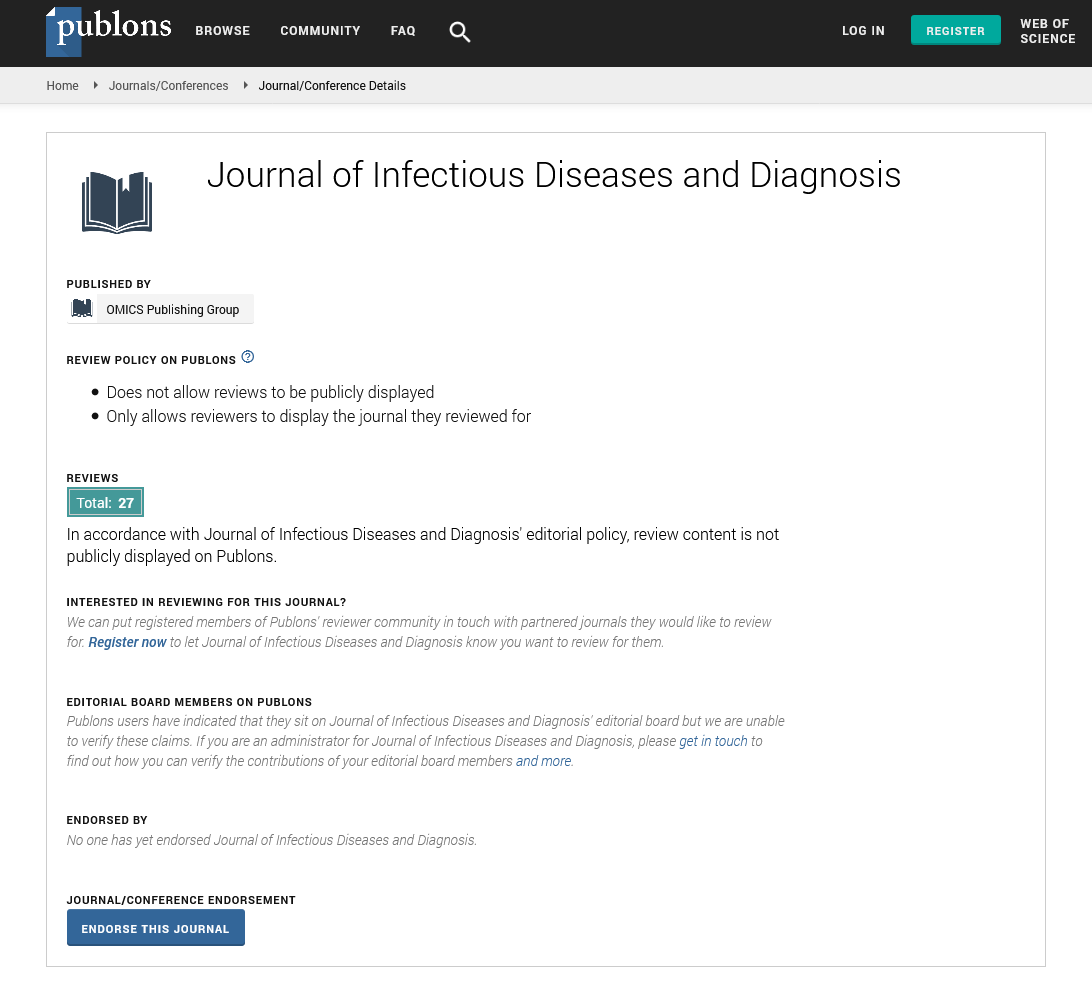Indexed In
- RefSeek
- Hamdard University
- EBSCO A-Z
- Publons
- Euro Pub
- Google Scholar
Useful Links
Share This Page
Journal Flyer

Open Access Journals
- Agri and Aquaculture
- Biochemistry
- Bioinformatics & Systems Biology
- Business & Management
- Chemistry
- Clinical Sciences
- Engineering
- Food & Nutrition
- General Science
- Genetics & Molecular Biology
- Immunology & Microbiology
- Medical Sciences
- Neuroscience & Psychology
- Nursing & Health Care
- Pharmaceutical Sciences
Opinion Article - (2025) Volume 10, Issue 3
Impact of Rapid Malaria Diagnostic Tests on Treatment Outcomes in Rural Health Centers: A Randomized Controlled Trial
Leon Wagner*Received: 30-Apr-2025, Manuscript No. JIDD-25-29301; Editor assigned: 02-May-2025, Pre QC No. JIDD-25-29301 (PQ); Reviewed: 16-May-2025, QC No. JIDD-25-29301; Revised: 23-May-2025, Manuscript No. JIDD-25-29301 (R); Published: 30-May-2025, DOI: 10.35248/2576-389X.25.10.336
Description
Malaria continues to be a major public health concern in many low- and middle-income countries, particularly in rural areas where access to diagnostic laboratories is limited. Traditionally, presumptive treatment based on clinical symptoms has been the common practice, often leading to overuse of antimalarial drugs and delayed identification of other febrile illnesses. The introduction of Rapid Diagnostic Tests (RDTs) for malaria has provided a new avenue for timely and accurate diagnosis at the point of care. These tests detect parasite-specific antigens in a small blood sample and provide results within 15–20 minutes without the need for microscopy or laboratory infrastructure. This study evaluated the impact of implementing malaria RDTs on treatment decisions and patient outcomes in rural health centers using a randomized controlled trial design.
The trial was conducted in 24 government-run primary health centers across two rural districts with moderate to high malaria endemicity. A total of 2,400 patients aged six months and older, presenting with fever and no clear non-malarial diagnosis, were enrolled. The participating health centers were randomly assigned to either the intervention arm, where RDTs were used to guide treatment, or the control arm, where standard clinical judgment was used to prescribe anti-malarials. In the intervention group, health workers were trained to perform and interpret the RDTs and to prescribe Artemisinin-based Combination Therapy (ACT) only for patients with a positive test result. Patients who tested negative were evaluated for other causes of fever and managed accordingly. In the control group, patients received ACT based on symptom assessment, consistent with local guidelines that prioritize empirical treatment in endemic areas.
The baseline characteristics of patients in both arms were similar, with the most common presenting symptoms being fever, headache, body aches and chills. The average age was 14 years, with nearly equal representation of children and adults. All participants were followed up on days 3, 7 and 14 post-treatments through home visits or return visits to the clinic to assess symptom resolution, drug adherence and adverse events. Results showed that in the RDT group, only 37% of patients received ACT, compared to 86% in the control group. Among RDT-positive patients who received ACT, 93% reported complete symptom resolution by day 7. Among RDT-negative patients, fewer than 10% returned with unresolved symptoms and most were found to have other infections such as respiratory or urinary tract infections. In contrast, in the control group, over 20% of patients returned with persistent symptoms despite having received ACT and a substantial number were later diagnosed with non-malarial illnesses.
The unnecessary use of ACT in RDT-negative patients was significantly reduced, indicating better alignment of treatment with actual parasitemia. Overprescription of ACT, a concern in many rural areas, was nearly halved through the use of RDTs. This has broader implications for cost savings, supply chain management and slowing the development of drug resistance. Health worker adherence to RDT results was high, with over 90% of negative tests followed by non-ACT prescriptions. Interviews with staff revealed increased confidence in the test outcomes and a greater willingness to explore alternate diagnoses. This behavioral shift was supported by job aids and supervisory visits, ensuring proper use of the new diagnostic tool.
Patients in the RDT group also reported greater satisfaction with care, as reflected in qualitative interviews. Many expressed relief at receiving a diagnosis and appreciated the quick test result. Caregivers of young children were especially receptive to the targeted treatment approach, as it reduced the need for multiple medications and unnecessary side effects. No serious adverse events were reported in either group. The study also assessed economic outcomes. The average drug cost per patient in the RDT group was 34% lower than in the control group, primarily due to more selective ACT use. While RDT kits added a marginal cost per patient, the reduction in inappropriate prescriptions offset this expense. Moreover, correct diagnosis led to earlier recovery and reduced the need for second visits, improving both household and health system efficiency.
Despite the benefits, challenges remained. In a few cases, false-negative RDT results were observed, particularly among patients with very low parasite densities. However, these cases were rare and were usually identified during follow-up when symptoms persisted. The study emphasized that RDTs should complement, not replace, clinical judgment, especially when symptoms are severe or inconsistent with test results. The implementation process revealed the importance of training, supervision and community sensitization. Initial skepticism among both providers and patients gave way to trust once the reliability of RDTs became evident. Sustaining this trust will require ongoing supply of high-quality test kits and reinforcement of diagnostic protocols.
In conclusion, the introduction of rapid malaria diagnostic tests in rural health centers significantly improved treatment accuracy and patient outcomes. By enabling targeted use of antimalarial drugs, RDTs reduced unnecessary medication, enhanced clinical decisionmaking and improved recovery rates. This study supports wider adoption of RDTs in malaria-endemic regions, especially where laboratory services are limited. Strengthening diagnostic capacity at the primary care level is a practical step toward better disease management and rational use of medicines. Continued efforts to train healthcare workers, ensure supply chain stability and monitor test performance will be essential for long-term success.
Citation: Wagner L (2025). Impact of Rapid Malaria Diagnostic Tests on Treatment Outcomes in Rural Health Centers: A Randomized Controlled Trial. J Infect Dis Diagn. 10:336.
Copyright: © 2025 Wagner L. This is an open-access article distributed under the terms of the Creative Commons Attribution License, which permits unrestricted use, distribution, and reproduction in any medium, provided the original author and source are credited.

